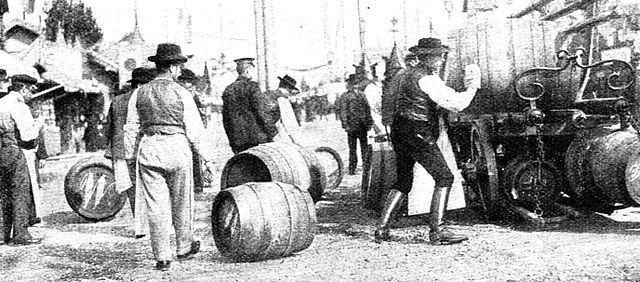Monday, October 28, 2013
Cities of Urbis - Building Bodenwald, Part III
Continued from the previous post...
As we continue to read the Munich Wikipedia entries for ideas to plunder, we come to Lehel. We learn that Lehel used to be a riparian forest criss-crossed by many streams outside the proper city limits where many poor people lived who weren't allowed into the city itself. Let's say that this also used to be true for the Bogenwald equivalent (which we will call Auewald, which is German for "riparian forest"), but in recent years aggressive urban construction has spread which attempts to make this riverside district a showcase of modern architecture, mixing residential and commercial areas. They also built numerous drainage channels to get the frequent spring floods under control, in which they succeeded... for the most part. In the places where the architects and engineers overestimated their abilities to control the waters, squatters hide out in the muddy, crumbling ruins of only recently-constructed buildings. A few druids might also live there in order to preserve what is left of nature in the area.
The next Munich district is Ludwigsvorstadt-Isarvorstadt, to the southeast of the city center. The Wikipedia entry has several items of interest. It's the site of the "Hauptbahnhof", the main train station, which is important in a setting that features trains as heavily as Urbis, though I still need to think of a way of making this train station memorable. It is the site of the Theresienwiese, where the Oktoberfest takes place - the real one, not one of those cheap American knock-offs. And of course Bodenwald needs an equivalent as well - in the Real World all sorts of Important Foreign Delegations just happen to arrive in Munich during the Oktoberfest, so the Urbis equivalent (let's call it the "Wiesenfest") has the potential for international intrigue and drunken debauchery - an irresistible combination for many adventurers. Of particular note are the tables reserved within the festival tents for specific companies and organizations, so meeting gnomish representatives of the Gemeinschaftsbank or the local chapter of the Athanatos Club should be easier here than elsewhere (and I should note that politics and beer festivals have always been closer intertwined in Bavaria than elsewhere...).
The district also used to be home to resin gatherers, which gives us the name for the Bodenwald equivalent - "Pechersdorf" (from "Pecherei", the German word for "resin gathering"). To give this more of an Urbis touch, perhaps they got some expert plant manipulators from the city of Grüngarten to make their resin plantations more efficient - the trees there now generate so much resin that they are called the "weeping trees" by the locals and require lots of care from the owners in order to survive. Hmmm, perhaps those were renegade plant manipulators, since Grüngarten prefers plants to be healthier...
Of further note are 19th century cavalry barracks (perhaps using unusual riding animals? I will have to go through the Pathfinder SRD again), former plague houses that turned into modern clinics (perhaps now specializing in extraterrestrial diseases and parasites, some of which may have escaped into the many local streams), and the Museumsinsel, a small island in the river where the Deutsches Museum (dedicated to science and technology - which in Urbis would also include magic) is located. While the headquarters of the European Patent Office are also of note, the Urbis equivalent would better fit into Praxus.
The next district is Maxvorstadt (I think I will call the Bodenwald counterpart "Moritzstadt", if my German readers can forgive the pun). One of the first things I read is that this is a planned district, with a prominent grid pattern (which are rather unusual in German cities, which tend to grow along star patterns from a circular center). In Urbis, this means that this district was fairly recent and built so that it would optimize the azoth output from the local nexus towers - which means not a grid pattern as such, but a street pattern that converges towards the towers. As a fairly new district planned from the ground up, it should have some prominent locations - universities (like in the original), and quite likely the headquarters of the Astromantic Society. It would also probably be appropriate to put some fraternities into the area - the type that goes for dueling scars, that is.
Continued in Part IV...
Subscribe to:
Post Comments (Atom)

No comments:
Post a Comment